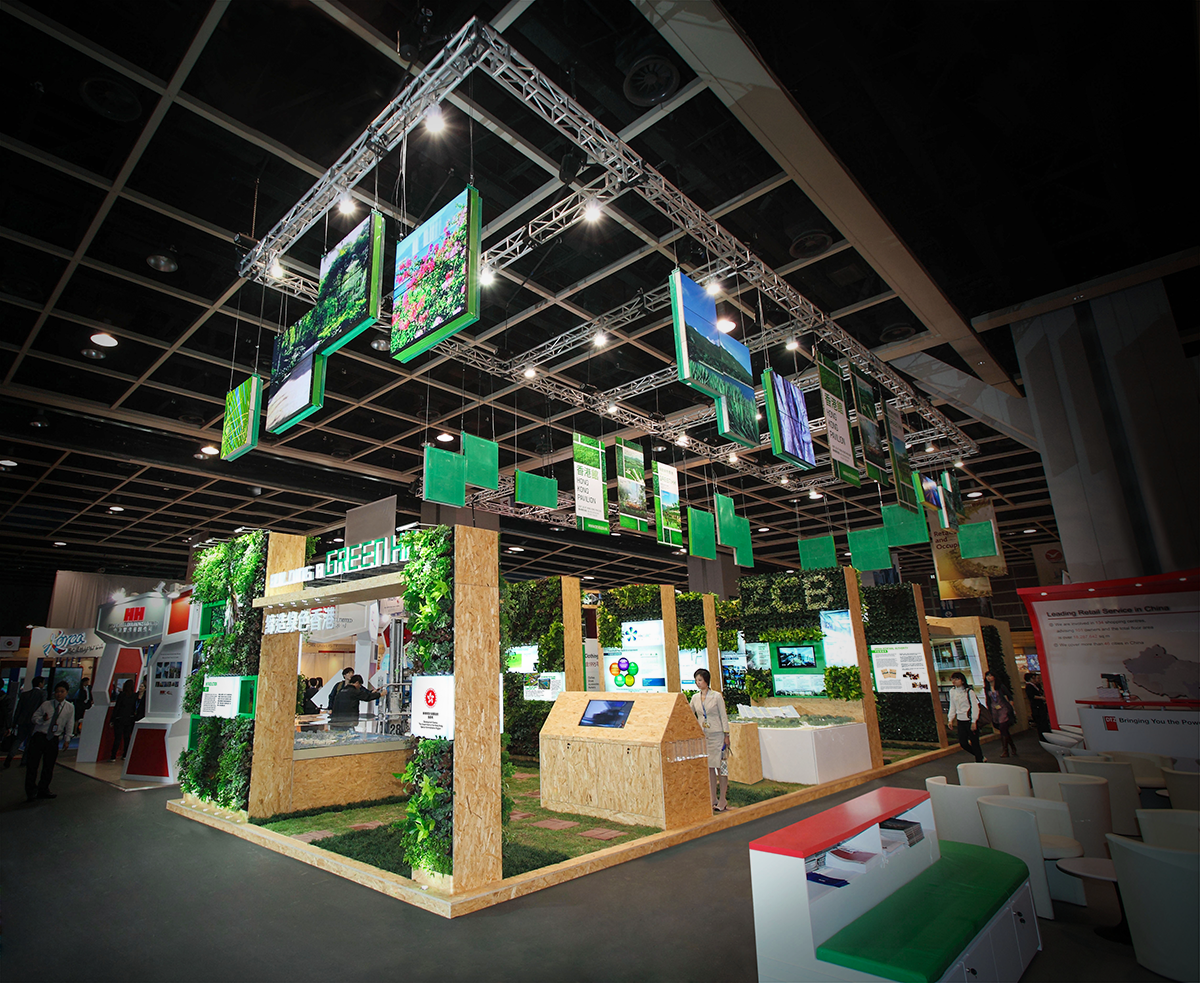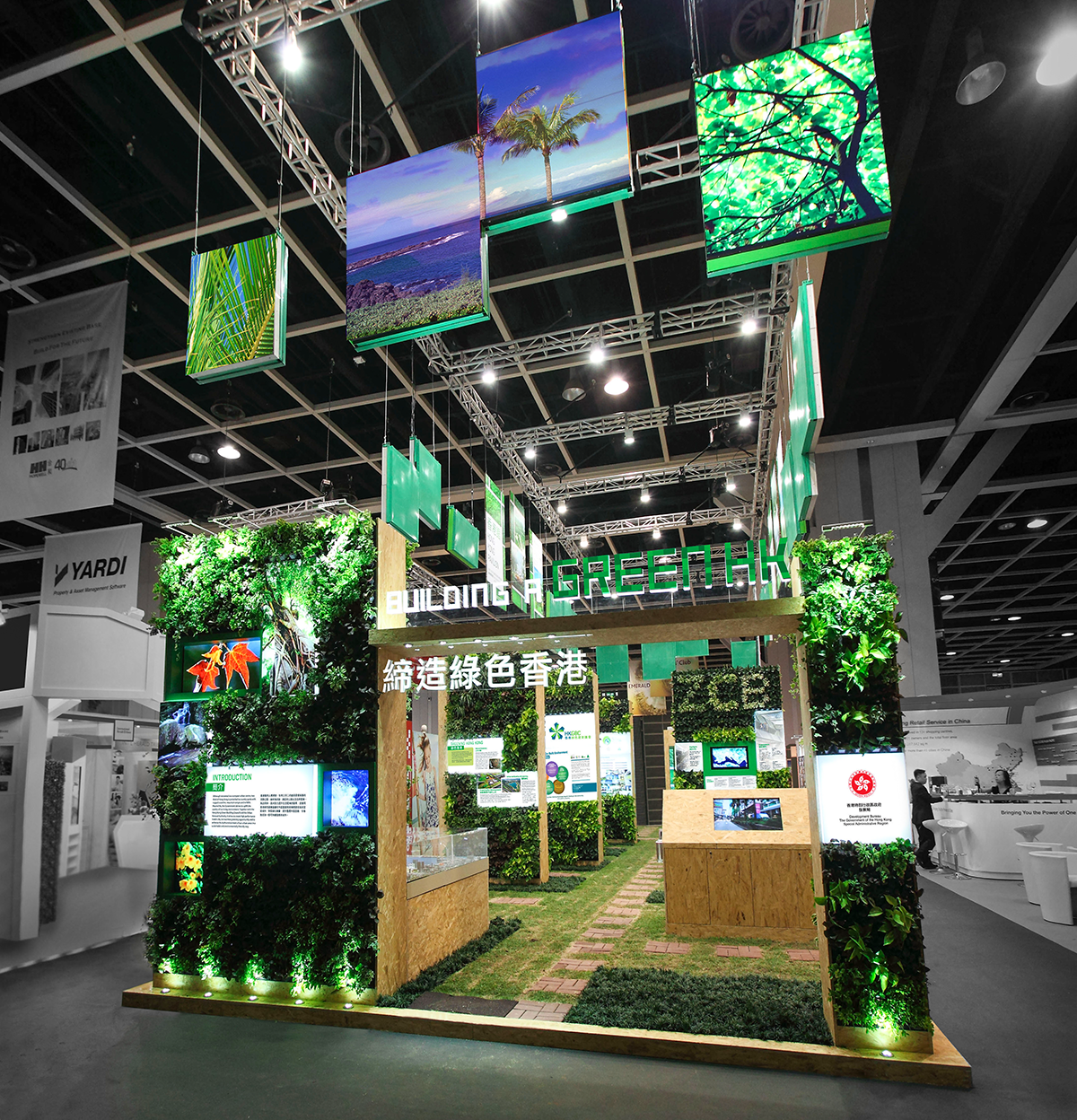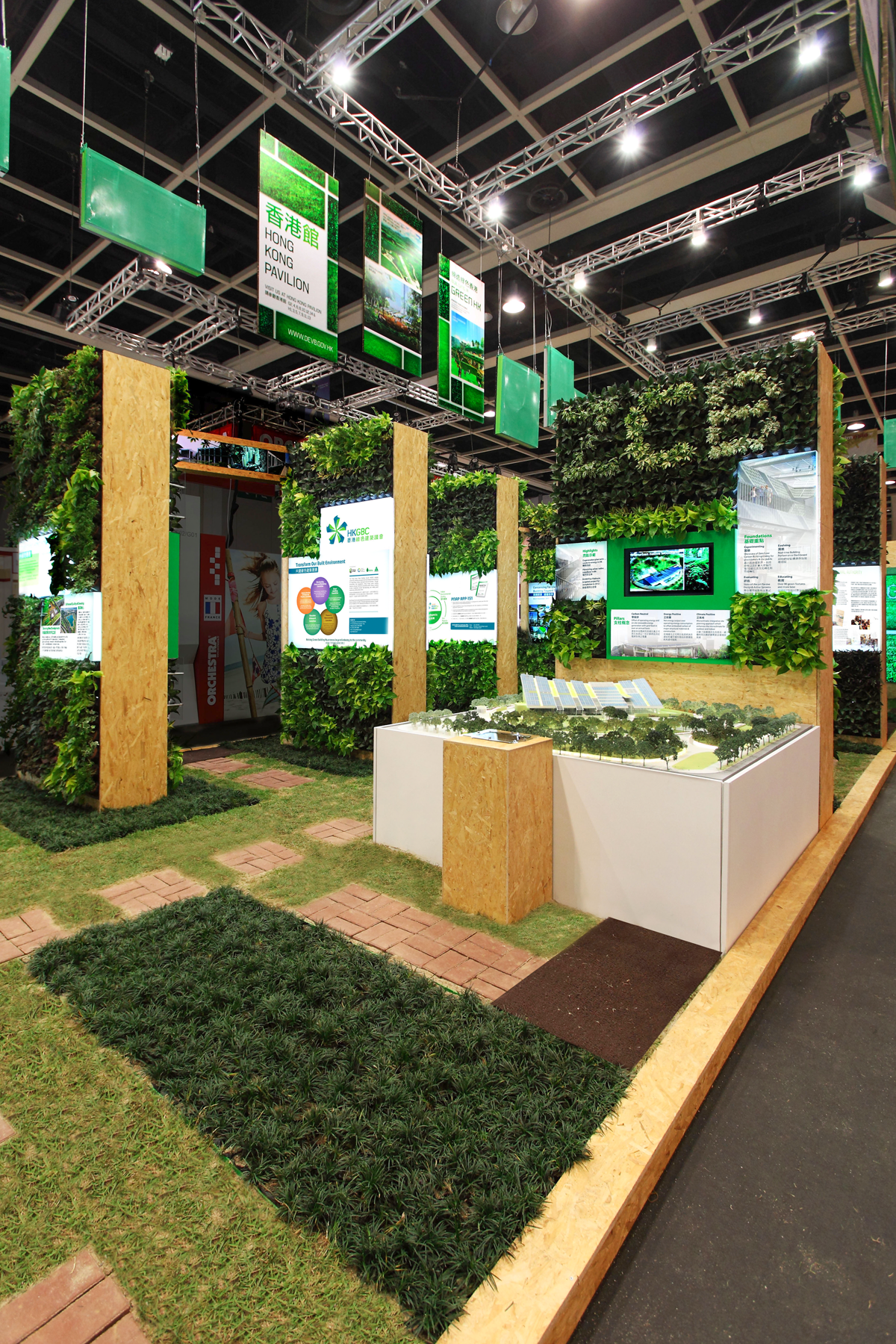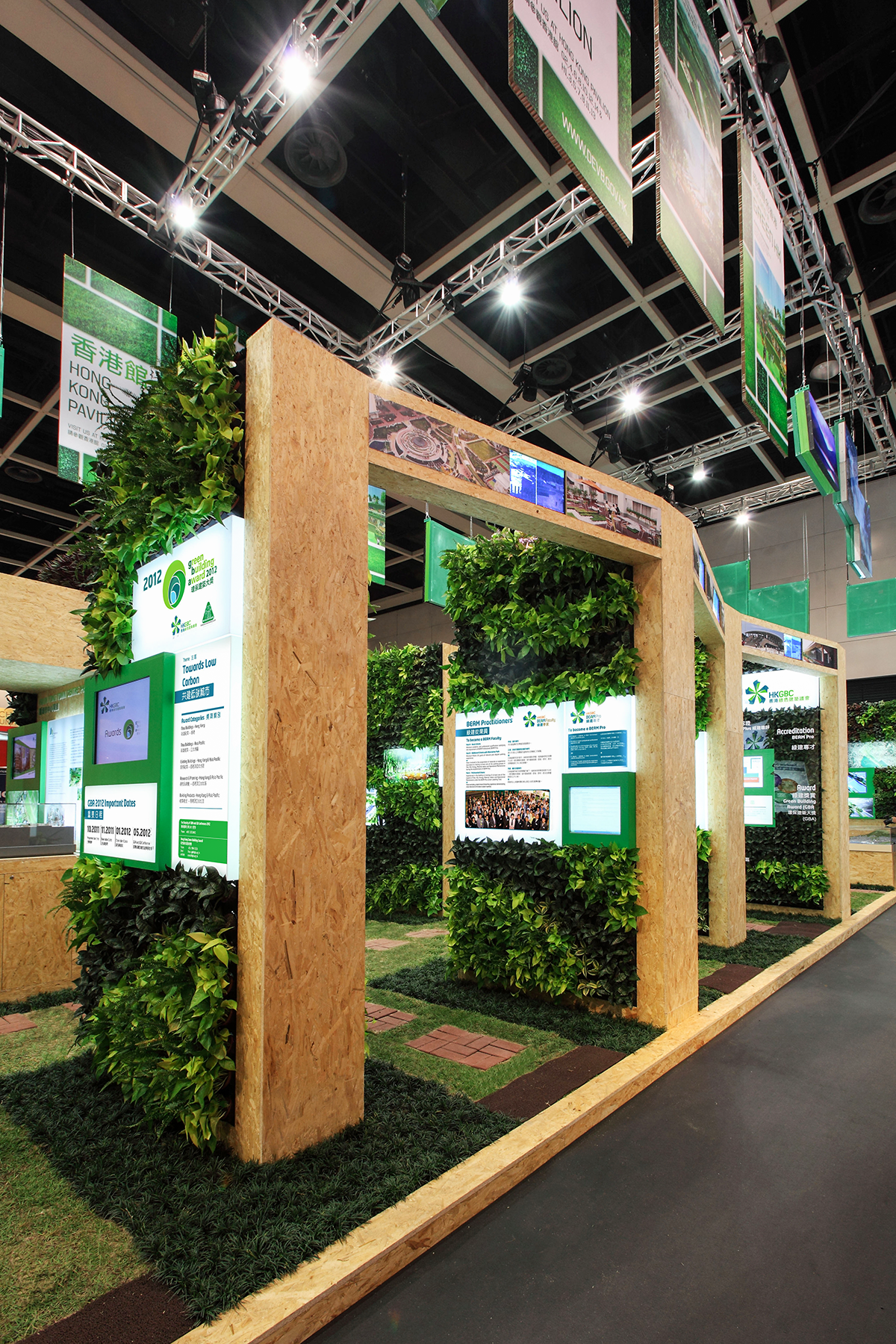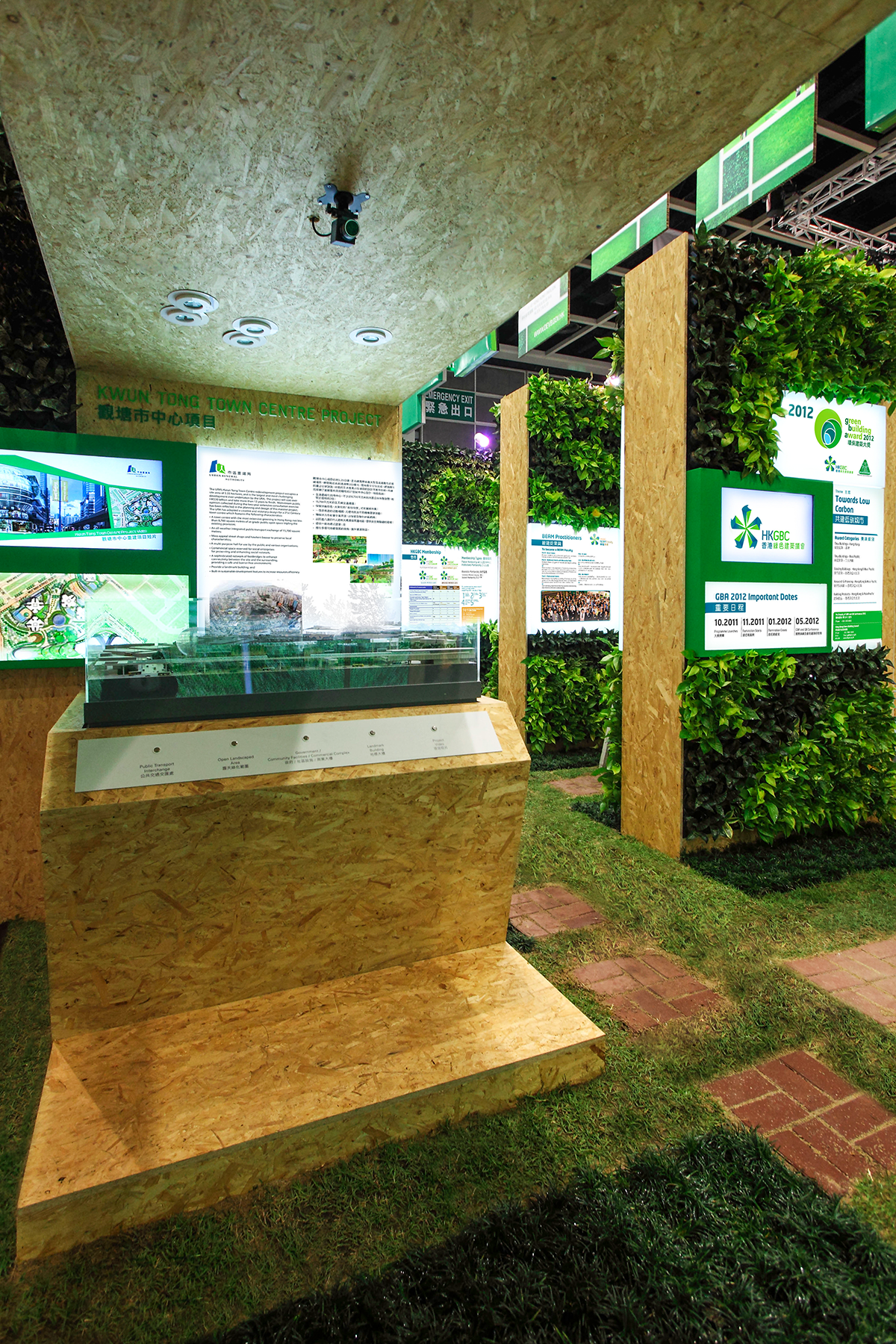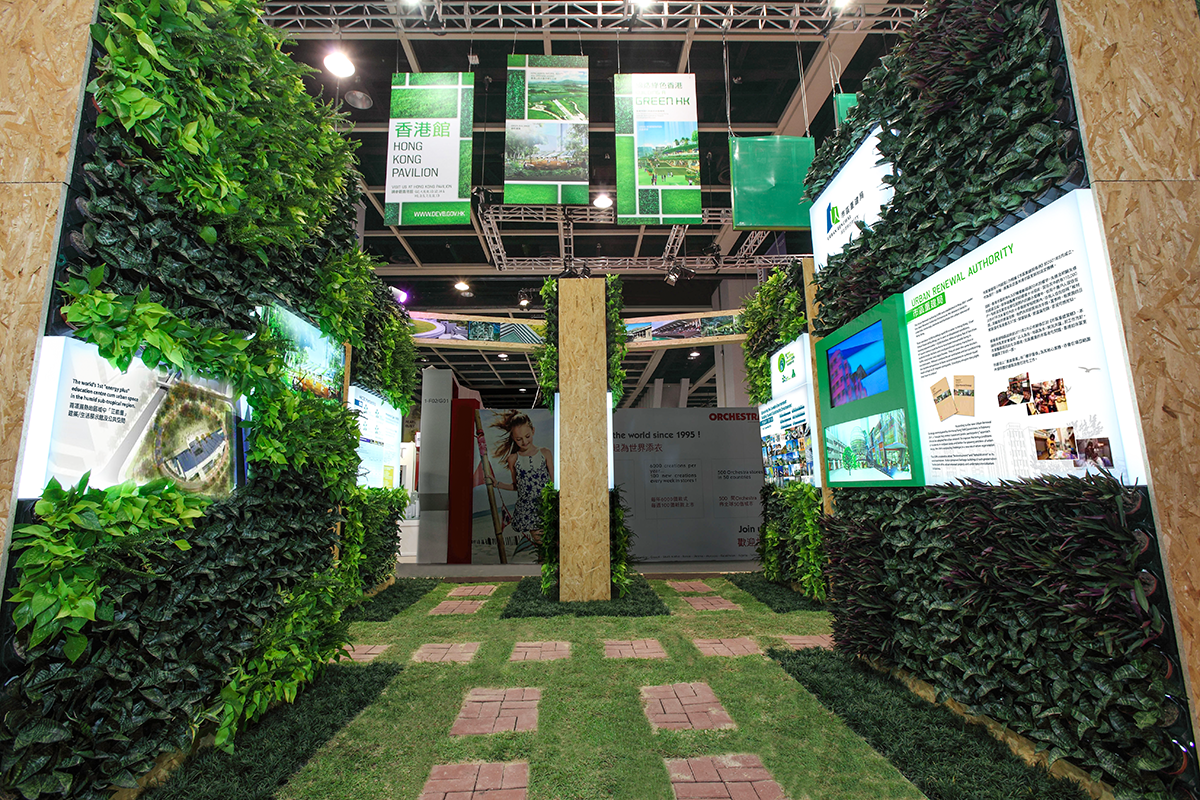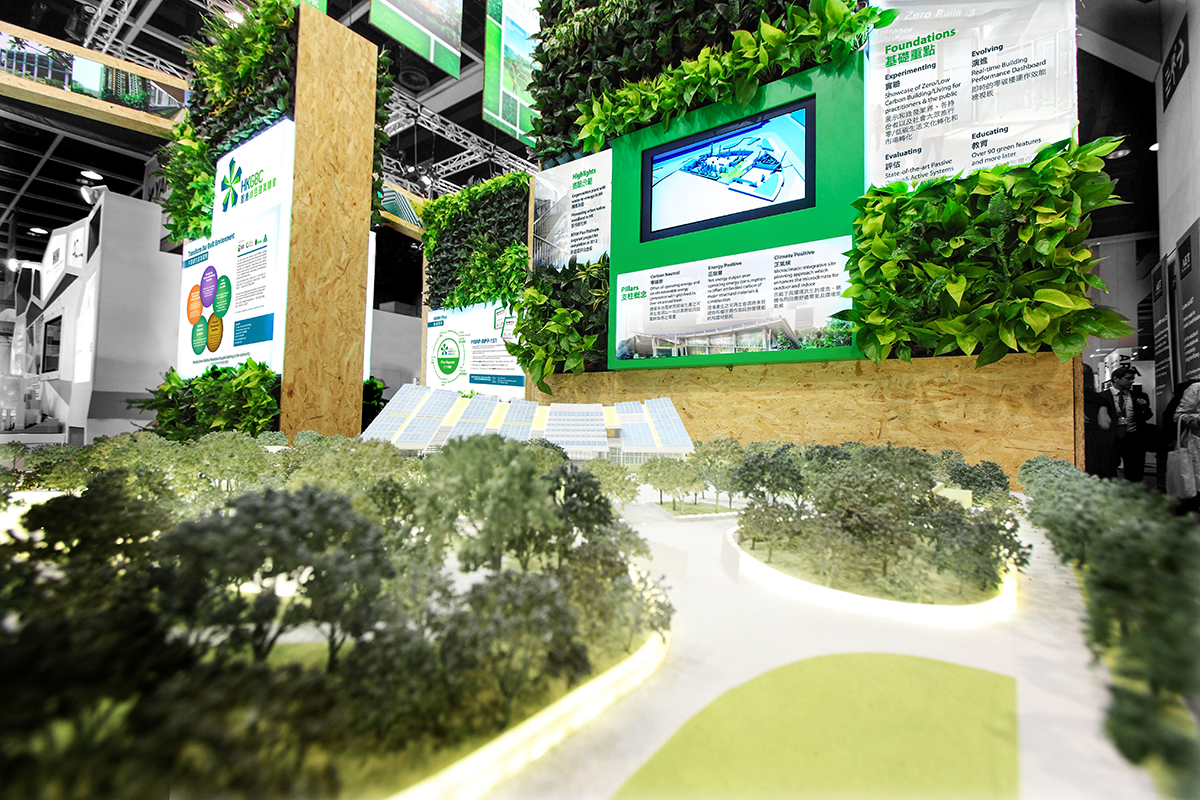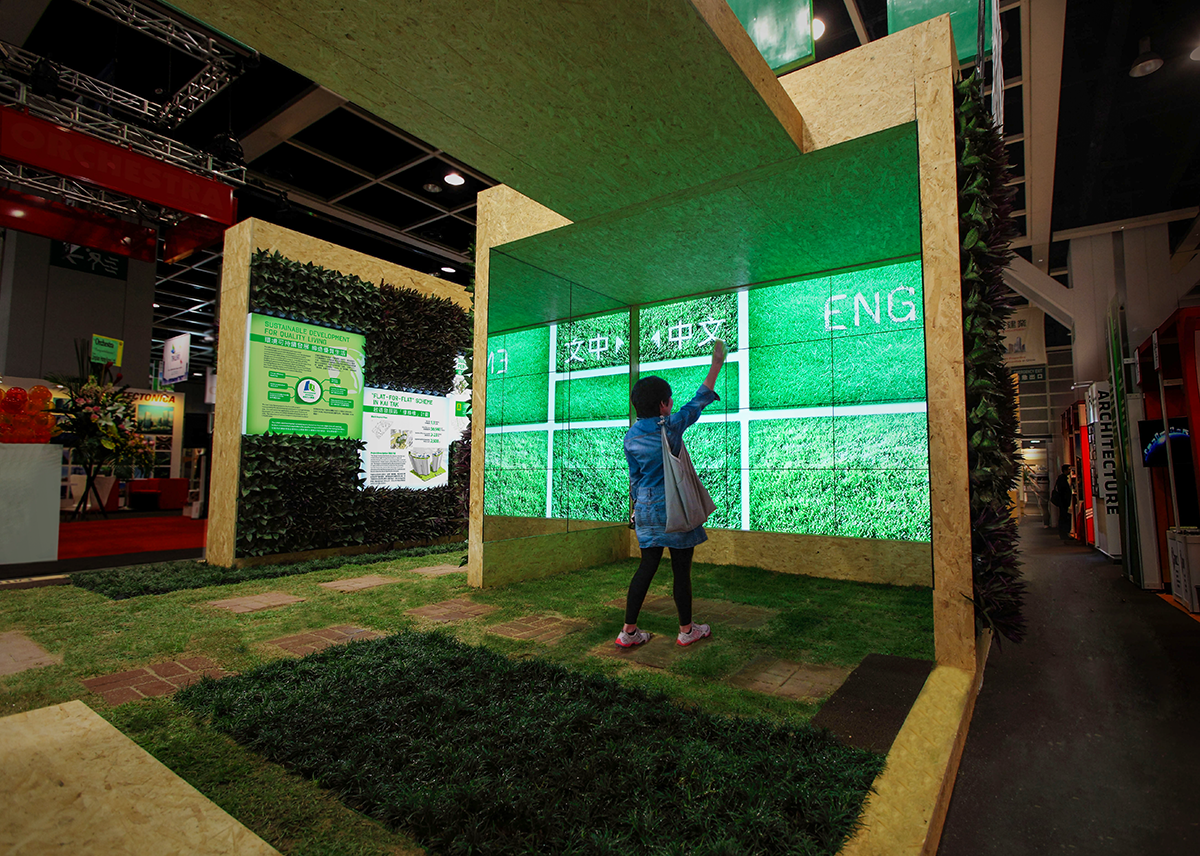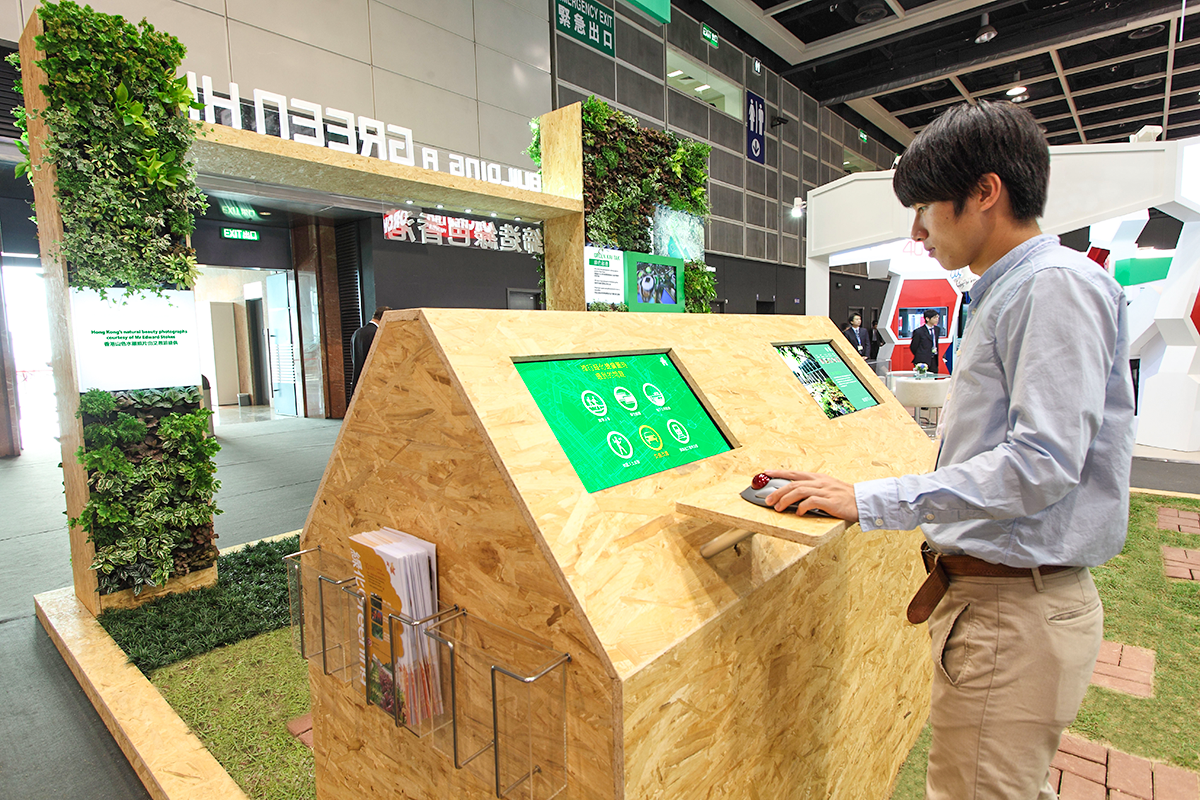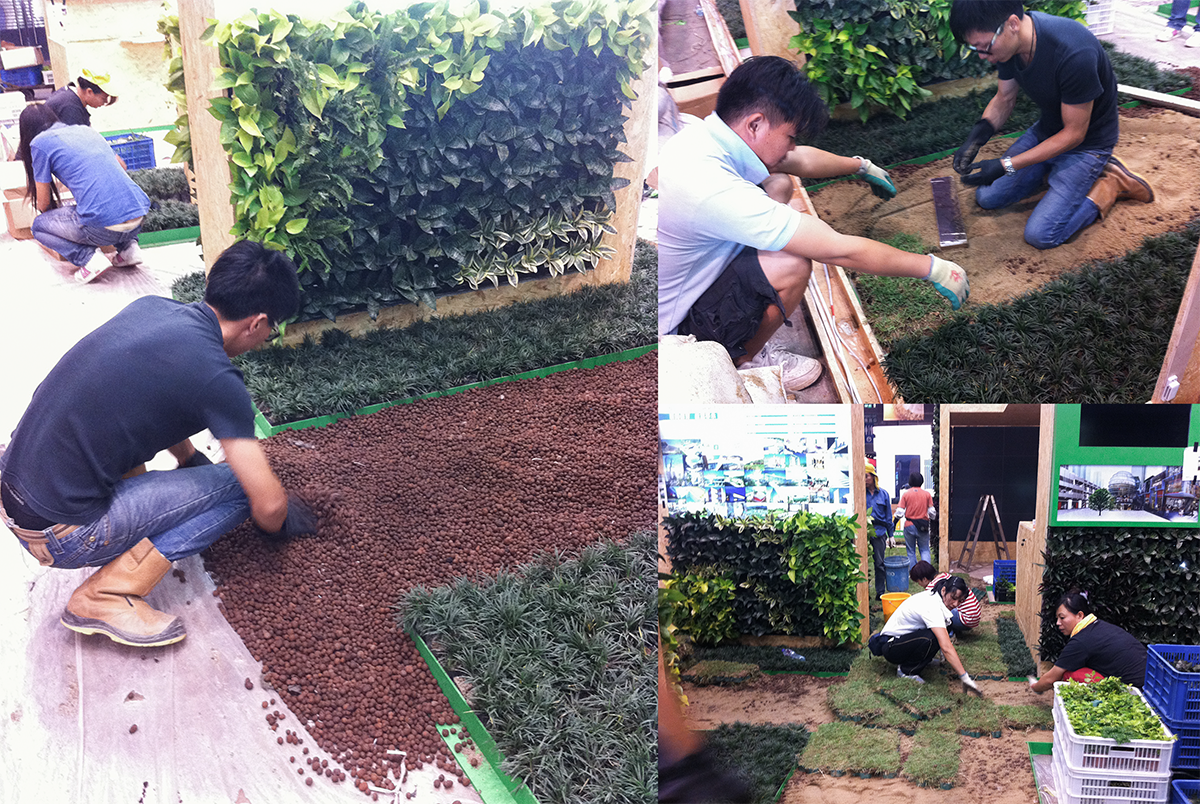Prev
Next
Hong Kong Pavilion at the MIPIM Asia 2011
Exhibition
Visitors were attracted to the pavilion by the stunning images of the natural scenery of Hong Kong displayed at the booth entrance. Conceived as a green haven featuring real plants as the main design feature, a footpath paved with eco-friendly bricks made from recycled glass bottles weaved through the genuine grassplot guiding visitors to every exhibits. Real plants of different species, mounted on metal grid structures, formed green walls in varying sizes and shapes which served to highlight different themes as well as providing space for the display of information and physical models. All potted plants and grass patches were not discarded but returned to the nursery centre after the exhibition.Special par lights emitting wavelengths on the light spectrum conducive to photosynthesis were used as general lighting. As a result, the potted plants and grassplot were able to thrive in the booth environment, which in turn contribute to fresher air and also helped to regulate the booth temperature.Special par lights emitting wavelengths on the light spectrum conducive to photosynthesis were used as general lighting. As a result, the potted plants and grassplot were able to thrive in the booth environment, which in turn contribute to fresher air and also helped to regulate the booth temperature.
Special par lights emitting wavelengths on the light spectrum conducive to photosynthesis were used as general lighting. As a result, the potted plants and grassplot were able to thrive in the booth environment, which in turn contribute to fresher air and also helped to regulate the booth temperature.
Exhibition content including graphics, visuals and videos were mainly presented as multi-media format using rented AV equipment such as LED screens or computer terminals. Reusable models with interactive features were also applied to highlight various sustainable infrastructure projects in the city. The extensive use of digital technology for information display not only created an interesting and engaging viewing experience but also avoided the use of printouts and boards in producing information panels. An external consultant was hired to monitor and help to minimise the carbon emissions throughout the booth creation process from design to production. Carbon emissions were also calculated and carbon offset was conducted in order to achieve the smallest carbon footprint in raw space exhibition construction.
The design create an extraordinary experience for the visitors where nature had been brought so close to them in a formal trade show. With the soothing and sweet aromas of the plants, softness of the grass and exhibits build with recycled material, the pavilion was transformed into a serene, green refuge from an otherwise synthetic milieu and an environment conducive to an in-depth viewing of the exhibits was also created.
Location: Hong Kong Convention and Exhibition Centre, Hong Kong
Client: Development Bureau, Hong Kong SAR Government
-
Hong Kong Pavilion at the MIPIM Asia 2011
-
![]()
-
![]()
-
![]()
-
![]()
-
![]()
-
![]()
-
![]()
-
![]()
-
![]()
-
![]()
Visitors were attracted to the pavilion by the stunning images of the natural scenery of Hong Kong displayed at the booth entrance. Conceived as a green haven featuring real plants as the main design feature, a footpath paved with eco-friendly bricks made from recycled glass bottles weaved through the genuine grassplot guiding visitors to every exhibits. Real plants of different species, mounted on metal grid structures, formed green walls in varying sizes and shapes which served to highlight different themes as well as providing space for the display of information and physical models. All potted plants and grass patches were not discarded but returned to the nursery centre after the exhibition.Special par lights emitting wavelengths on the light spectrum conducive to photosynthesis were used as general lighting. As a result, the potted plants and grassplot were able to thrive in the booth environment, which in turn contribute to fresher air and also helped to regulate the booth temperature.Special par lights emitting wavelengths on the light spectrum conducive to photosynthesis were used as general lighting. As a result, the potted plants and grassplot were able to thrive in the booth environment, which in turn contribute to fresher air and also helped to regulate the booth temperature.
Special par lights emitting wavelengths on the light spectrum conducive to photosynthesis were used as general lighting. As a result, the potted plants and grassplot were able to thrive in the booth environment, which in turn contribute to fresher air and also helped to regulate the booth temperature.
Exhibition content including graphics, visuals and videos were mainly presented as multi-media format using rented AV equipment such as LED screens or computer terminals. Reusable models with interactive features were also applied to highlight various sustainable infrastructure projects in the city. The extensive use of digital technology for information display not only created an interesting and engaging viewing experience but also avoided the use of printouts and boards in producing information panels. An external consultant was hired to monitor and help to minimise the carbon emissions throughout the booth creation process from design to production. Carbon emissions were also calculated and carbon offset was conducted in order to achieve the smallest carbon footprint in raw space exhibition construction.
The design create an extraordinary experience for the visitors where nature had been brought so close to them in a formal trade show. With the soothing and sweet aromas of the plants, softness of the grass and exhibits build with recycled material, the pavilion was transformed into a serene, green refuge from an otherwise synthetic milieu and an environment conducive to an in-depth viewing of the exhibits was also created.


